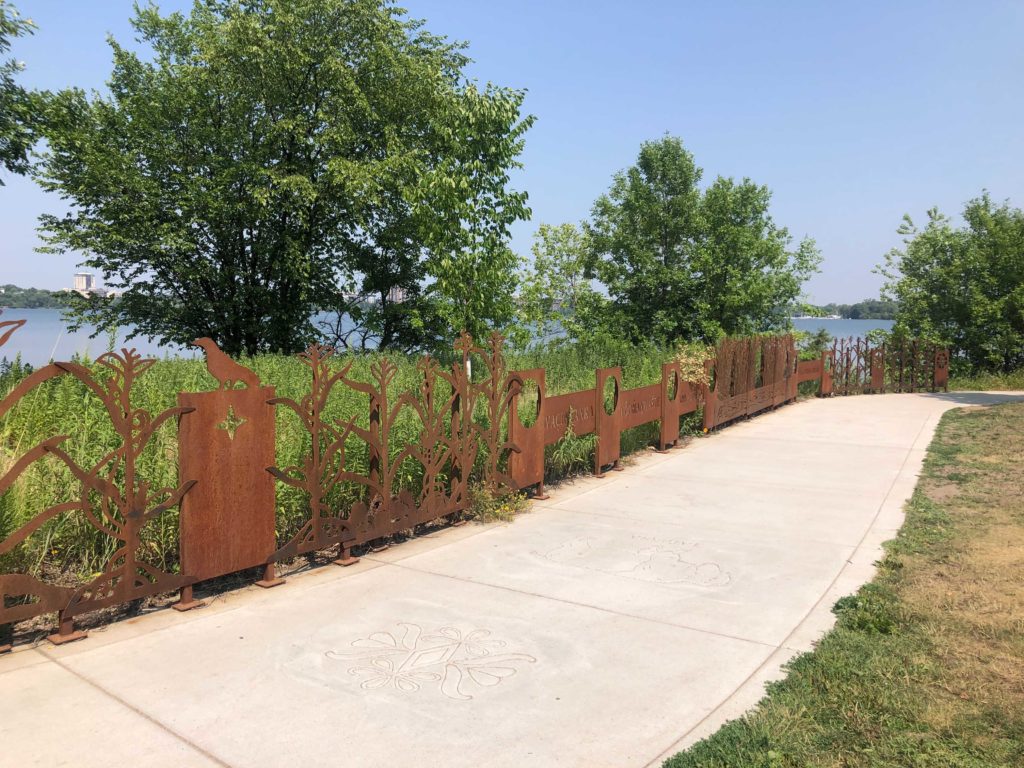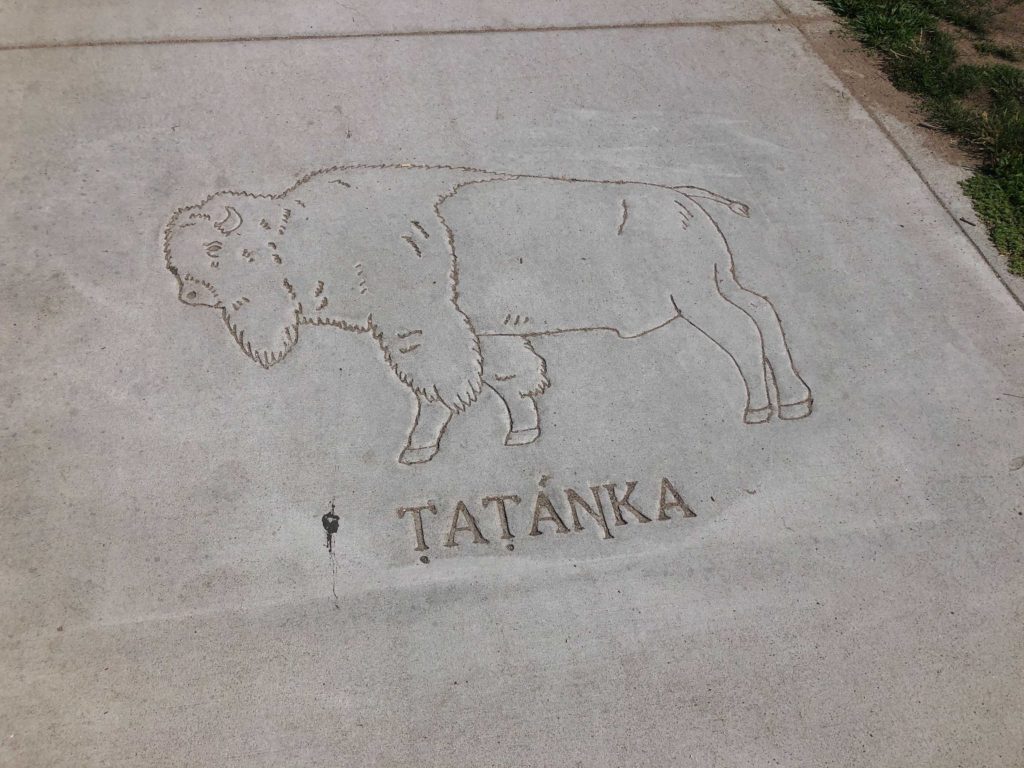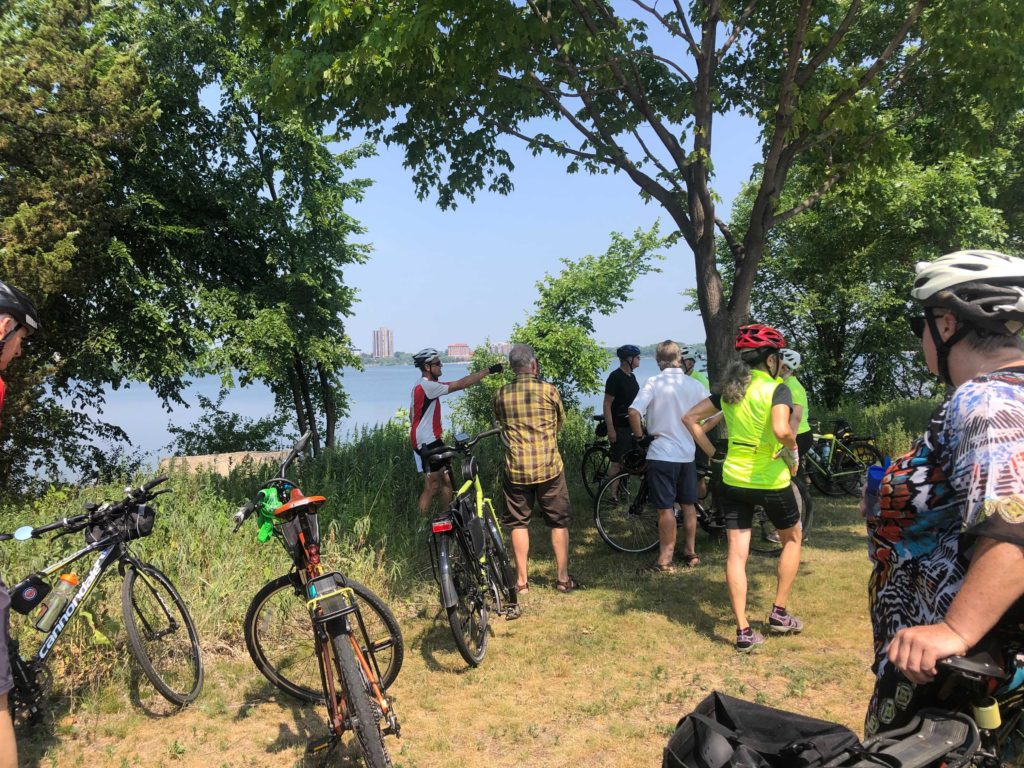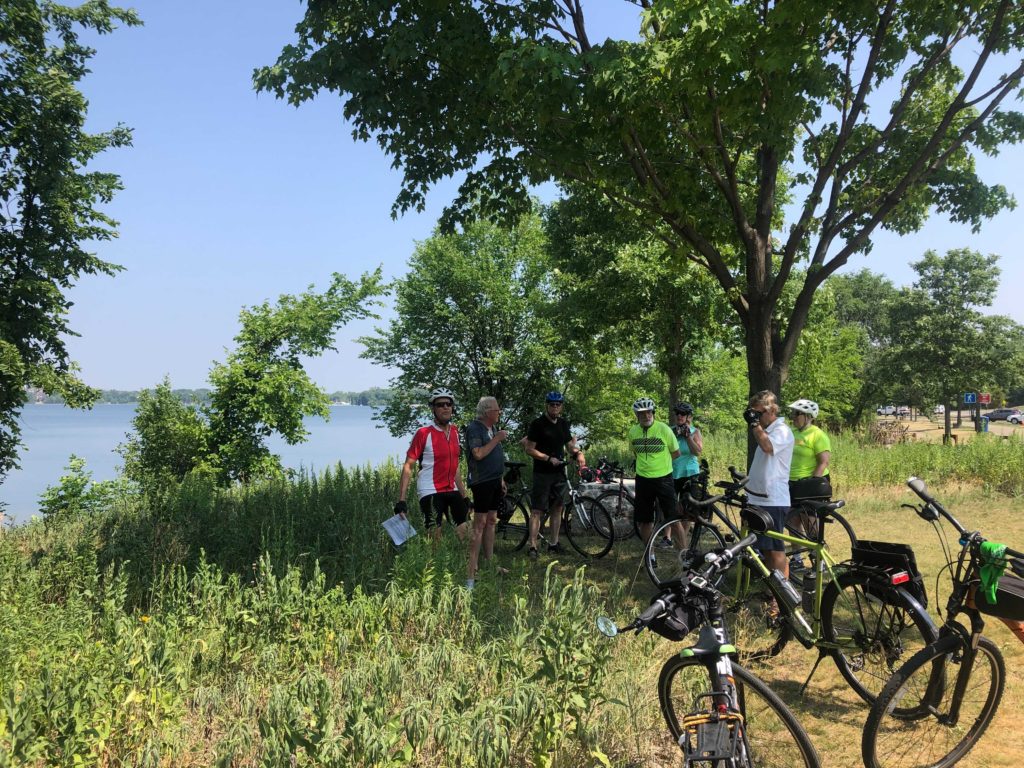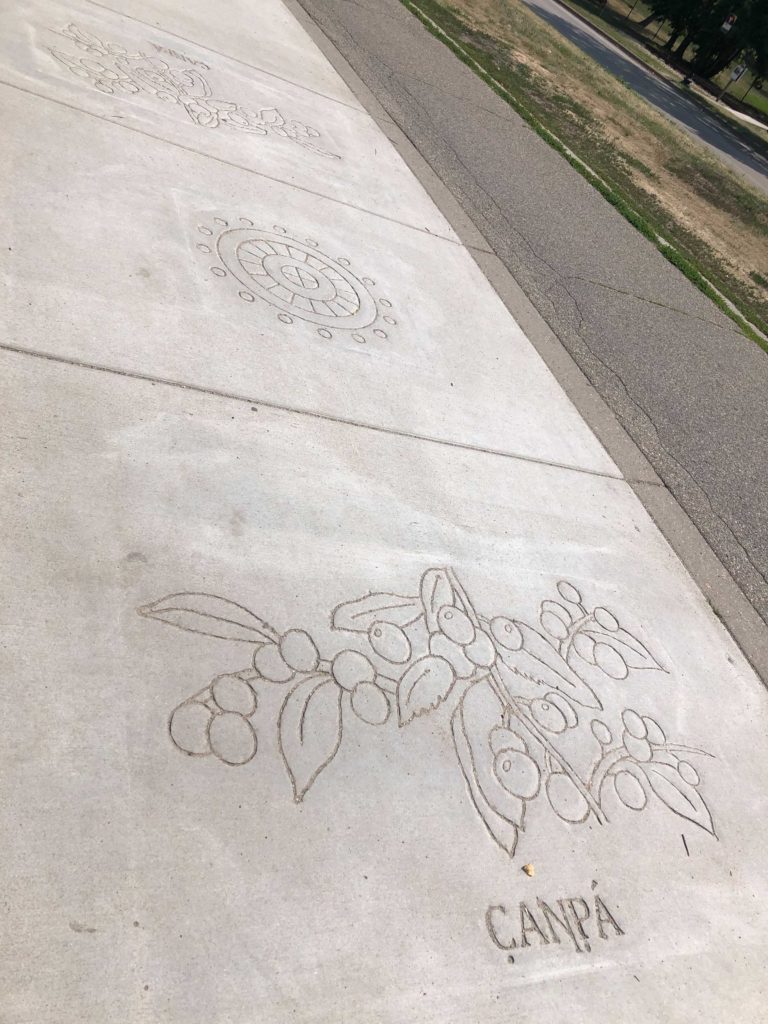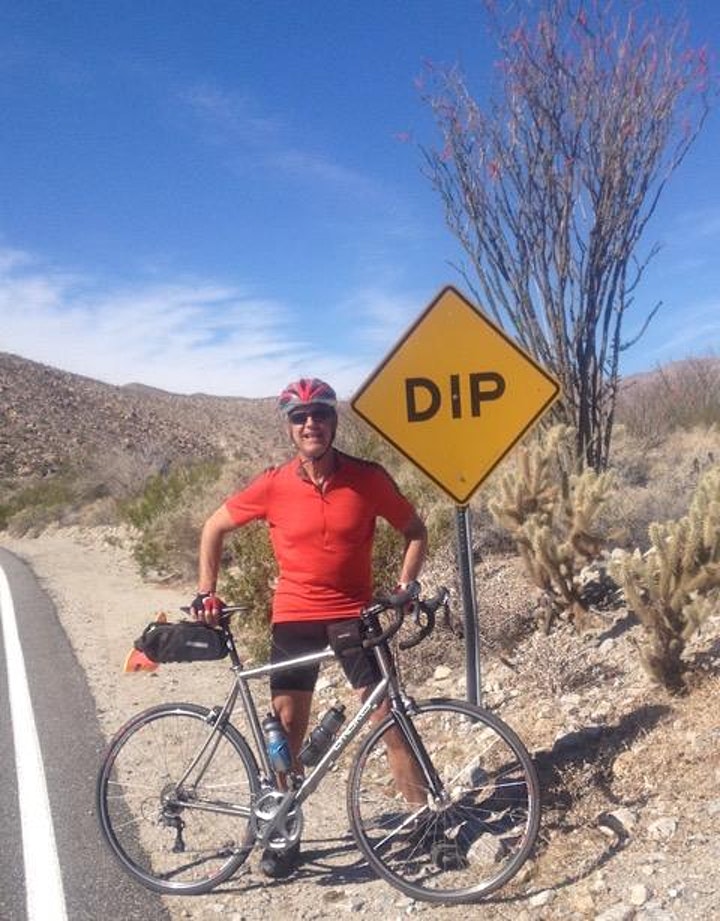
Public art is becoming a more popular and effective way of forming communities and giving spaces meaningful identity. Like all art, public art inspires observers to think about their world differently. The Bicycle Alliance of Minnesota was honored that Minneapolis artist and BikeMN member Greg Ingram offered to lead three Public Art Tours around Minneapolis during the late summer.
“Public art is art in public spaces. Art that is accessible to everyone. Public art can express community values, enhance our environment, transform a landscape, heighten our awareness, or question our assumptions.”
– Greg Ingram
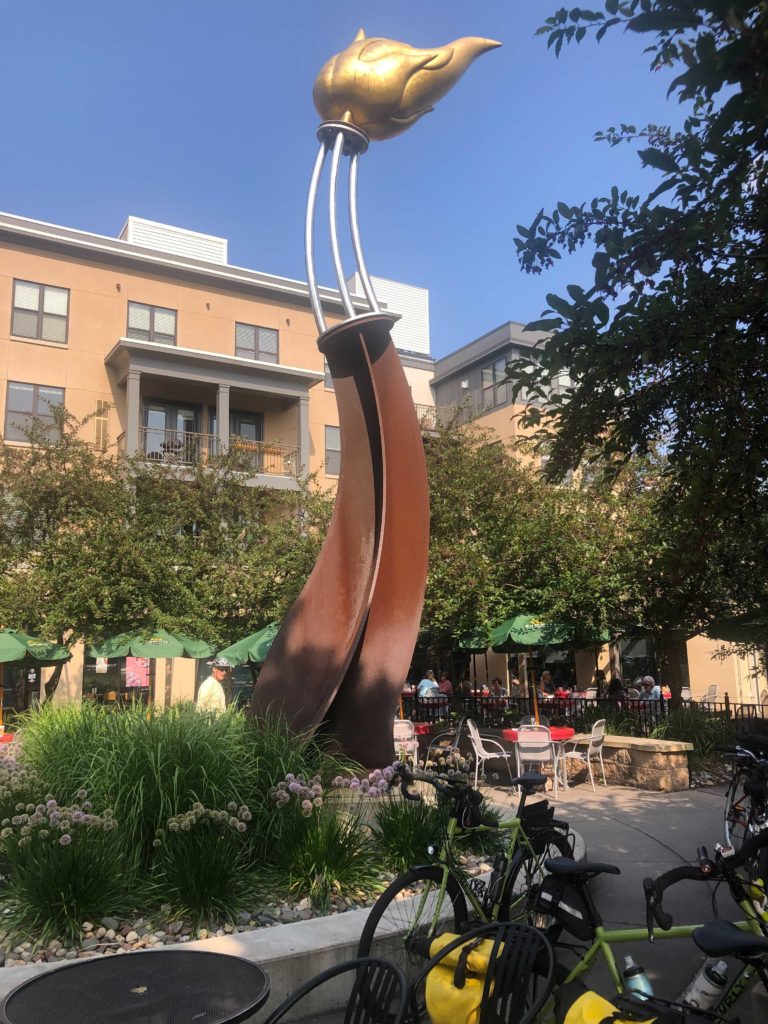
The group met at the Longfellow Grill on one of the hottest and muggiest days this summer! Well prepared with bright clothing, water, gear, and having gone over general guidelines while riding together in a group, we started discussing our first public art piece of the 10-12 mile ride – the torch right in the middle of the patio section of Longfellow Grill!
The interesting thing about exploring public art during this tour was how different each work of art we stopped to talk about was. Ranging in use, size, material, and message – we stopped to see and talk about art along the Greenway commuters could easily miss every day, wayfinding art, and infrastructure that connects people to places like the Martin Olav Sabo bridge.
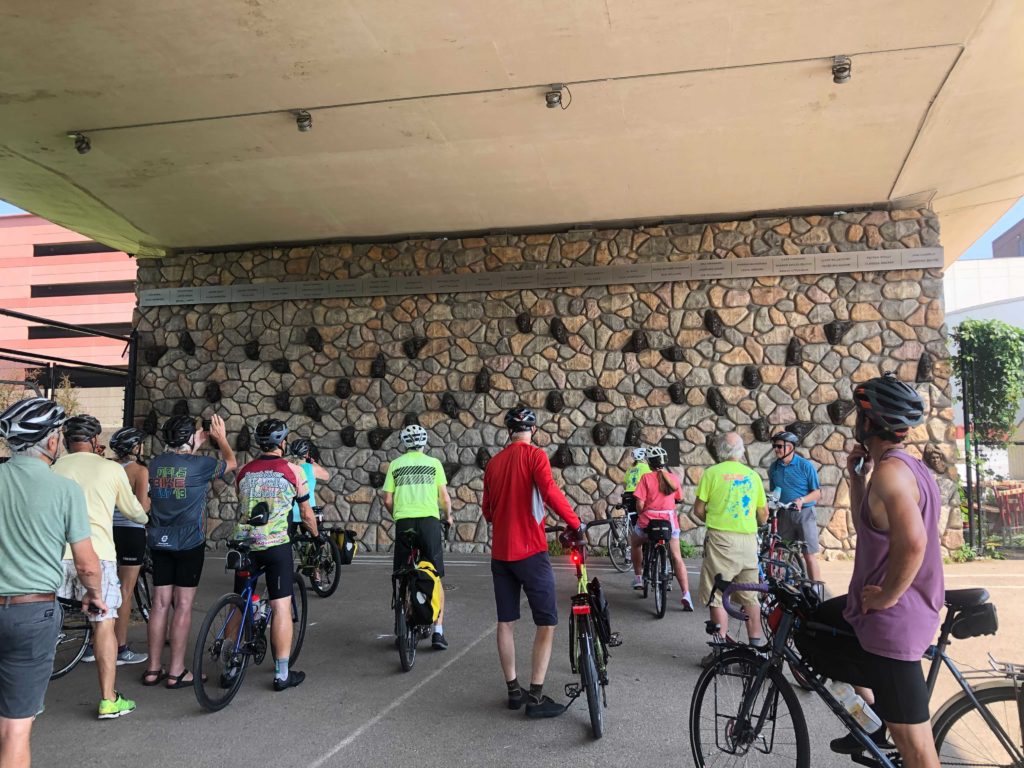
Community Leader Portraits, a sculpture of leaders along the Greenway 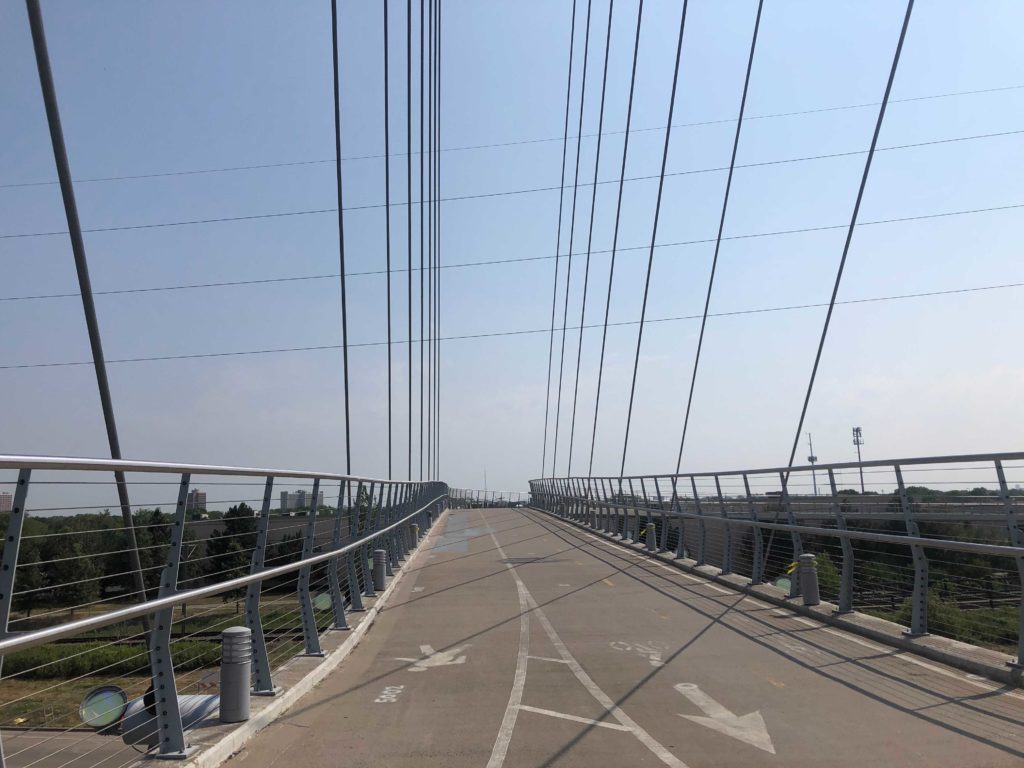
Martin Olav Sabo Bridge 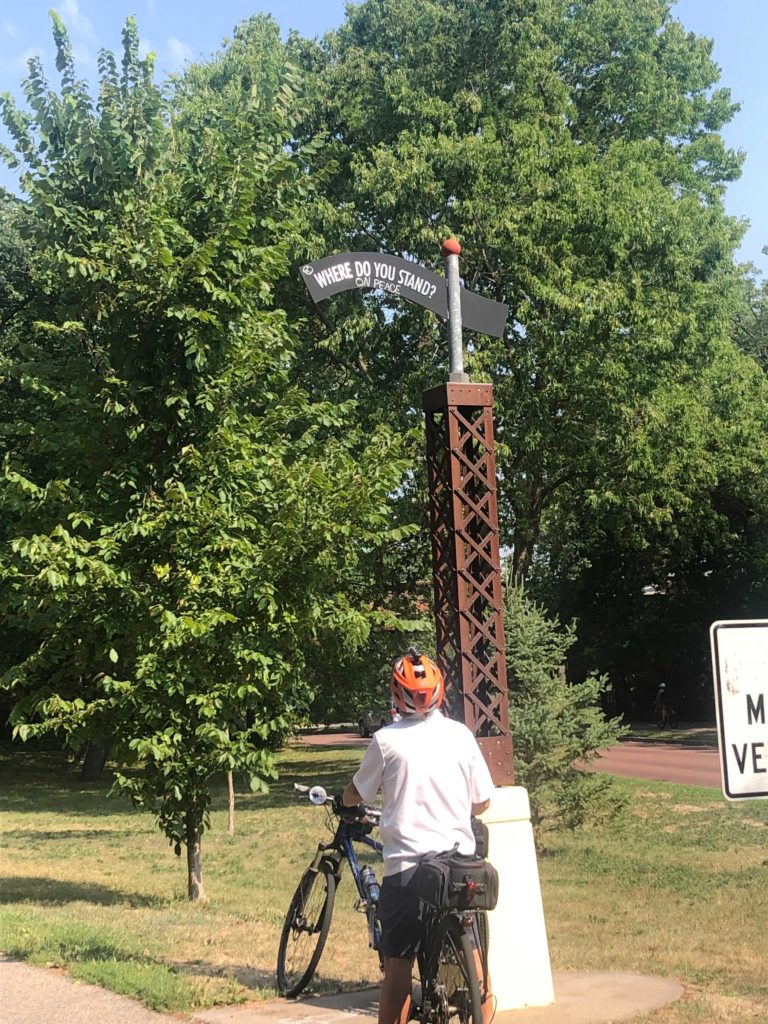
Wayfinding art created by Greg Ingram
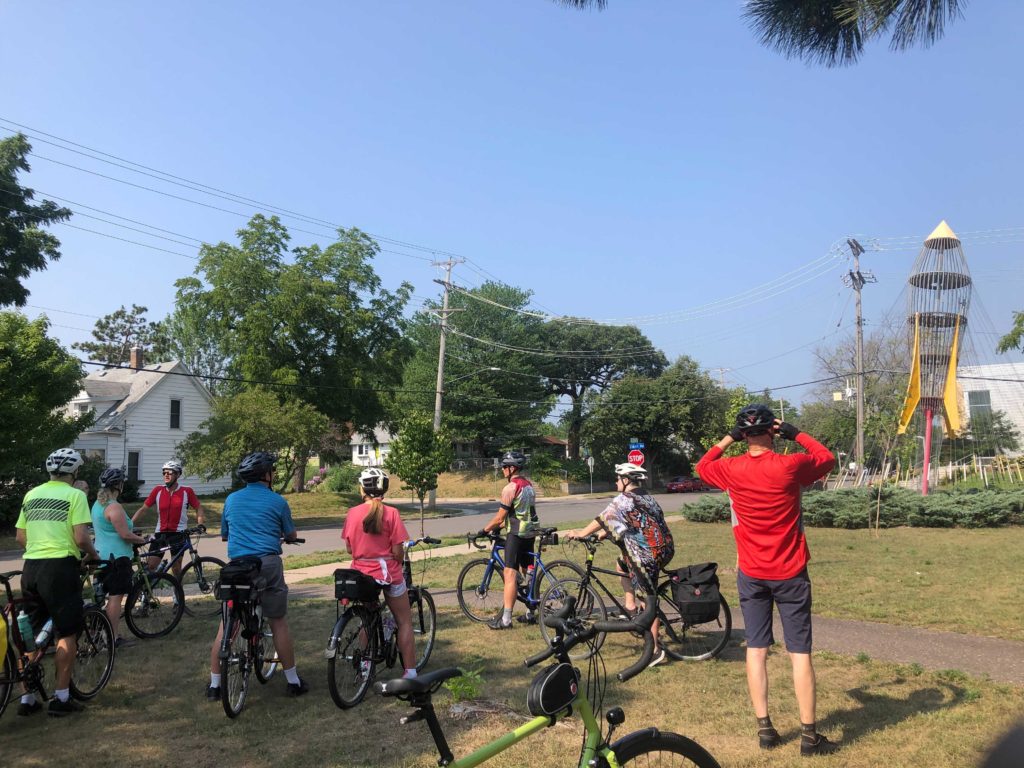
One work we stopped at wasRandy Walker’s Return Journey in Brackett Park. Return Journey was created after the surrounding community fundraised enough to repurpose play equipment that would be phased out and replaced. Those play structures remained in the neighborhood in the form of Return Journey! Randy Walker’s concept was a rocket that was being barely restrained, fighting to return to something beyond our atmosphere. Riders on the tour remarked that the art reminded us of Branson’s and Bezos’s recent space flights. You don’t have to be a billionaire to dream about space, just go to Brackett Park and see Return Journey!
“Public art can take a wide range of forms, sizes, and scales—and can be temporary or permanent. It often interprets the history of the place, its people, and perhaps addresses a social or environmental issue.”
– Greg Ingram
On our final leg of the tour, we stopped at Zaníyaŋ Yutḣókc̣a (Brave Change) public art located along the trail around Bde Maka Ska. Brave Change consists of a public gathering place with a circular stone seating area, ornamental panels that form a railing, and a pedestrian path with inscriptions naming local crops, plants, and wildlife. The art is created to commemorate Ḣeyata Oṭuŋwe, a 19th century Dakota agricultural community on the southeast bank of Bde Maka Ska, and its founder, Dakota leader Maḣpiya Wic̣aṡṭa (Cloud Man). Greg talked about how rewarding it is to see more diverse artists and messages in public art around the state. We noted how Brave Change works with the land surrounding it, emulating nature directly in the sculptures and even leaving space to see grass between the materials.
Public art is important to people and spaces because it is accessible art, it promotes community and neighborhood vitality, history, places and placemaking, and even economic development. Hopefully, this ride helps people connect to the art in their own backyards or neighborhoods. We hope you can join us at the next ride, which you can learn more about and register for here.

